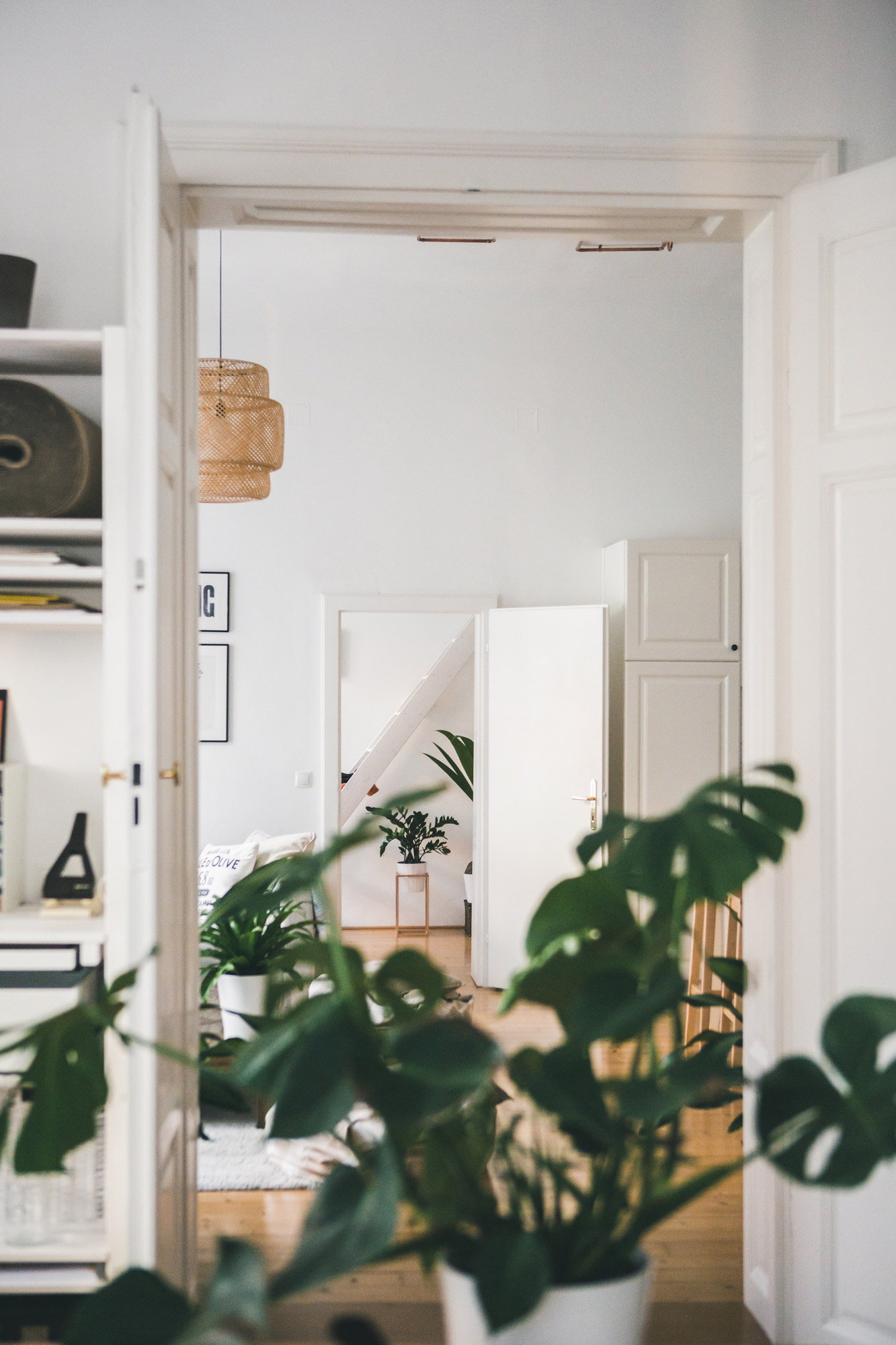Interview: Jelena Donko — Of Atoms And Lines
A State of
A State of
Wonder

The world is full of wonders and Jelena Donko, better known as »Of Atoms and Lines«, knows this well. Her hobby is collecting them. Her profession to transform them into shapes. The well-travelled visual artist currently resides in Graz, where she lives and works in the historic city center.
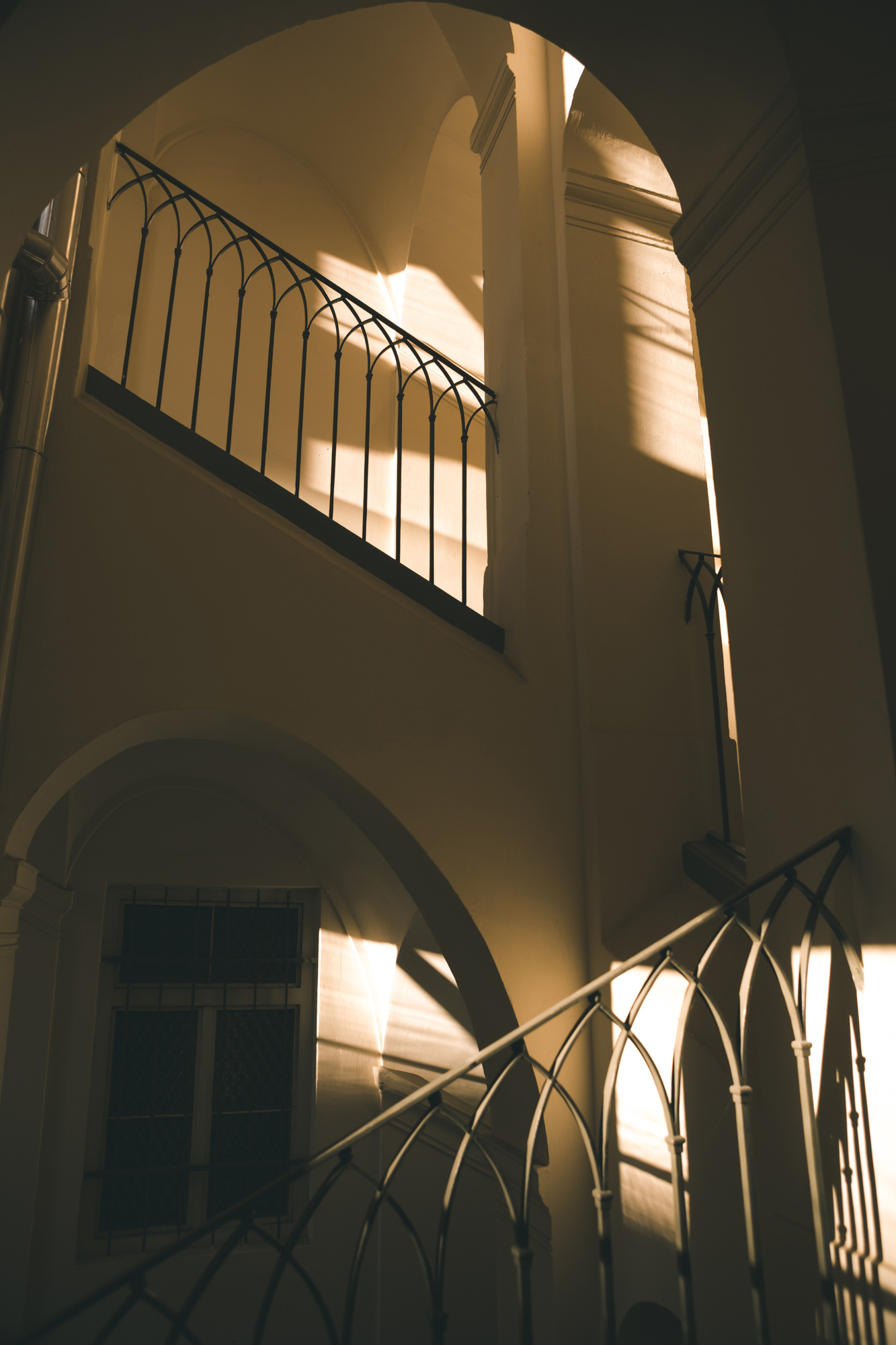

Ask anybody about the country of »Sound of Music«, and you’ll probably get some well-meant recommendations like: »Go to Vienna during Christmas time«, »Visit Salzburg and its beautiful lakes« or »The Tyrolean mountains are just amazing«. Nobody will ever send you to Graz. The second biggest city of Austria, located on the south side of the Alps, nestles right between Vienna and Ljubljana. It is famous for, well … nothing really. The old town is built around the Schlossberg, an ancient hilltop castle that might have just been important enough to put it on the UNESCO World Heritage list.
But the lack of tourists leaves a lot of »creative« room to breathe.
Designers are all over the place, and you can feel that with every step. The steps we had to take to get to Jelena’s studio led us straight up one picture-perfect staircase to her workshop slash apartment on the third floor of an 18th century building not far from the Graz opera house. As we entered, we were overwhelmed by the bright, delicately arranged apartment with a bohemian twist.
Hi Jelena! So nice to be here in your oh so inspiring studio. But let’s dive right in: you are an architect, graphic designer, visual artist – so many different titles for just one person. Do they affect each other? What job description do you feel captures best the essence of what you do?
It was roughly four years ago, when I first realized that everything I do influences each other in a way. My technical background in architecture, the creativity living inside me, the project management skills when handling huge building sites. It all aligned and now I see myself more as a visual artist than anything else. When you call yourself a »visual artist«, you can be anything from experimental to abstract, and sometimes even nonsensical. I like that.
It was roughly four years ago, when I first realized that everything I do influences each other in a way. My technical background in architecture, the creativity living inside me, the project management skills when handling huge building sites. It all aligned and now I see myself more as a visual artist than anything else. When you call yourself a »visual artist«, you can be anything from experimental to abstract, and sometimes even nonsensical. I like that.


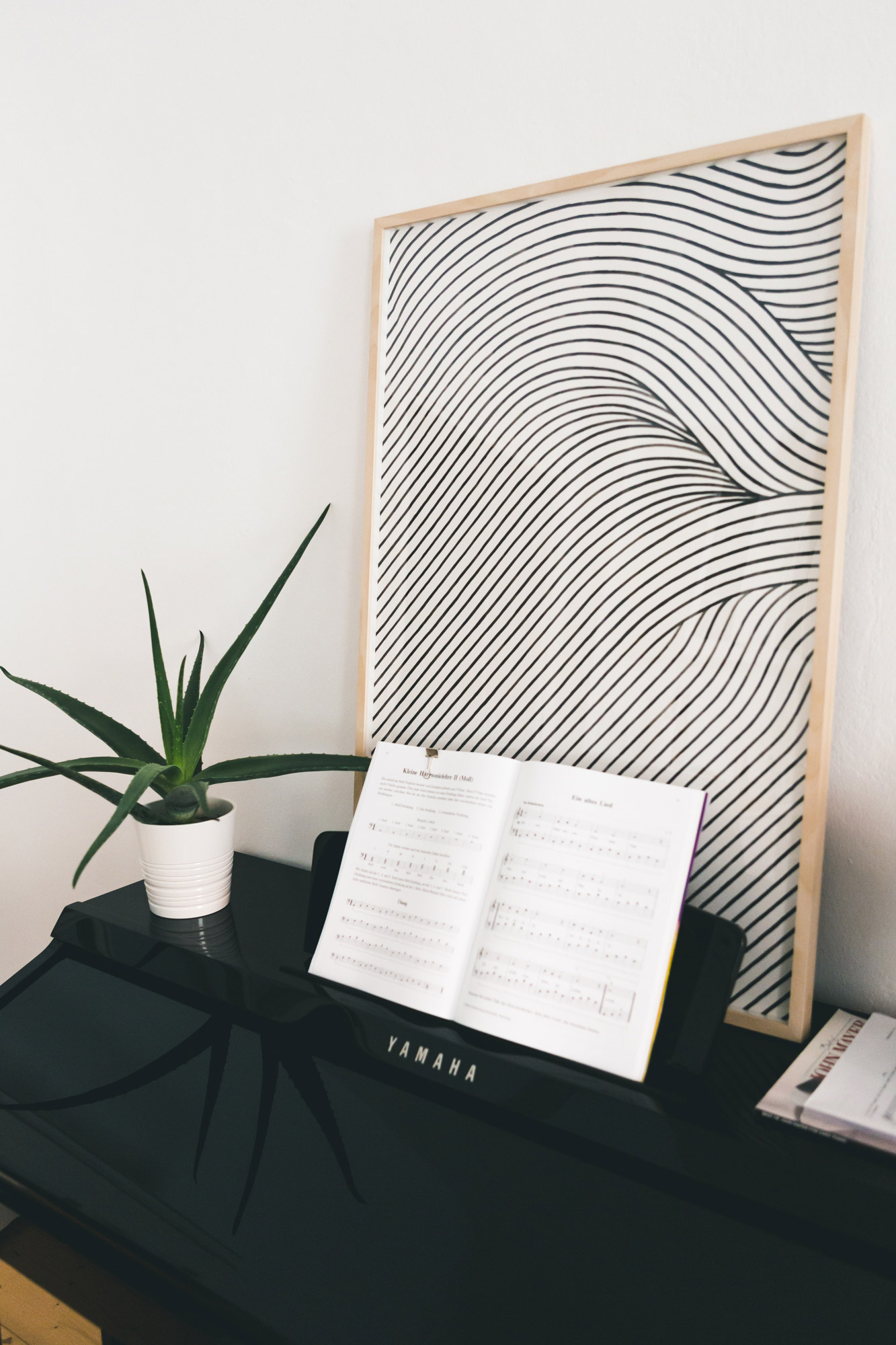
»It was his attitude of just letting loose that inspired me, and I can sense this mindset in the cultural everyday life of Spain.«
On Pablo PicassoYou’ve studied in various places around the globe: Graz, London, Spain, South Africa. How did the change of scenery influence you and your work?
I was born in Bosnia but moved to Graz at age 6, so I basically grew up here. I studied architecture, and when I think about that now, I feel the impact these more-than-hundred-year-old buildings have on me. When you walk by a house that has been standing there since way before my grandparents were alive, you start thinking about other dimensions. Older cities open up a time-based experience to me.
But I wanted more, so I went to Spain because I love the culture and the food. I lived in Seville and went to Madrid a lot. I remember going to the Picasso Museum quite often – I am fascinated by Pablo Picasso starting his abstract phase, and thus establish the Cubism era. It was his attitude of just letting loose that inspired me, and I can sense this mindset in the cultural everyday life of Spain.
For my master’s thesis, I went to South Africa. All of a sudden, everything seemed so wide – looking at the sea and grasping that sense of infinity broadens your mind. And last but not least, there was London. For me it is the craziest place in Europe. Everything can be anything in this city, and I soaked it all up. From weird installations over craftsmanship to tradition – London opens your mind up completely. You can do anything you want.
I was born in Bosnia but moved to Graz at age 6, so I basically grew up here. I studied architecture, and when I think about that now, I feel the impact these more-than-hundred-year-old buildings have on me. When you walk by a house that has been standing there since way before my grandparents were alive, you start thinking about other dimensions. Older cities open up a time-based experience to me.
But I wanted more, so I went to Spain because I love the culture and the food. I lived in Seville and went to Madrid a lot. I remember going to the Picasso Museum quite often – I am fascinated by Pablo Picasso starting his abstract phase, and thus establish the Cubism era. It was his attitude of just letting loose that inspired me, and I can sense this mindset in the cultural everyday life of Spain.
For my master’s thesis, I went to South Africa. All of a sudden, everything seemed so wide – looking at the sea and grasping that sense of infinity broadens your mind. And last but not least, there was London. For me it is the craziest place in Europe. Everything can be anything in this city, and I soaked it all up. From weird installations over craftsmanship to tradition – London opens your mind up completely. You can do anything you want.

Does your inspiration come from within or from outside?
I would say both. When I work on designs, which is my bread-and-butter job, I draw inspiration from the outside. I observe a lot and things visually inspire me, like the wideness of South Africa. But it wouldn’t directly inspire me to draw something infinite. My art is more conceptional and inspired by ideas like time spans, dimensions and physics. I like the fact that you can do whatever you want and are not dependent on a certain form. In other words: A dog I see wouldn’t inspire me to draw a dog.
I would say both. When I work on designs, which is my bread-and-butter job, I draw inspiration from the outside. I observe a lot and things visually inspire me, like the wideness of South Africa. But it wouldn’t directly inspire me to draw something infinite. My art is more conceptional and inspired by ideas like time spans, dimensions and physics. I like the fact that you can do whatever you want and are not dependent on a certain form. In other words: A dog I see wouldn’t inspire me to draw a dog.
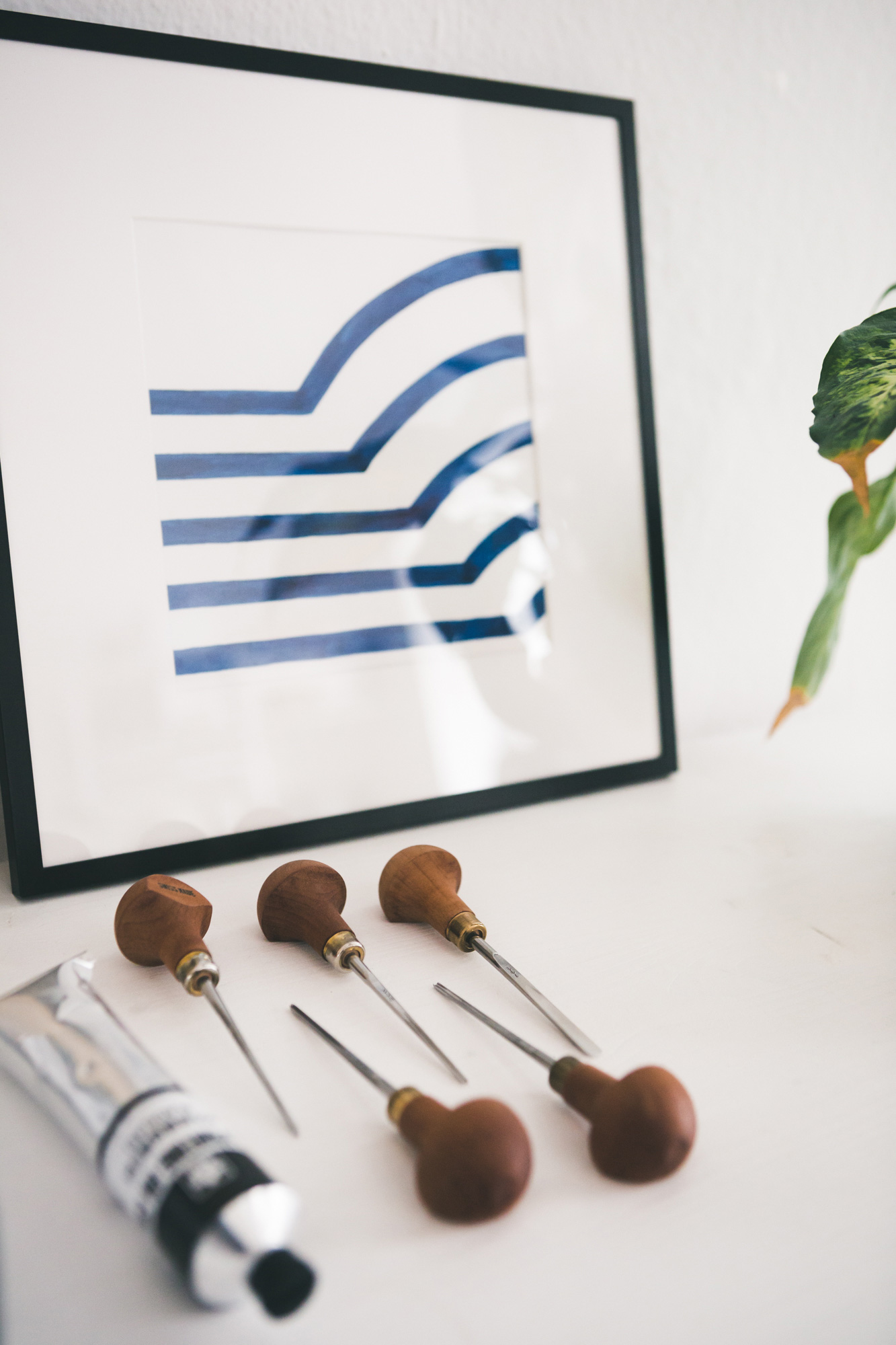

Are there places that are more inspiring than others?
No – for me a church can be as interesting as a museum. As soon as you start to observe and really see things, you can find inspiration everywhere. A wide ocean, a small room or even a leaf and its structure.
»I observe a lot and things visually inspire me, like the wideness of South Africa. But it wouldn’t directly inspire me to draw something infinite. My art is more conceptional and inspired by ideas like time spans, dimensions and physics.«
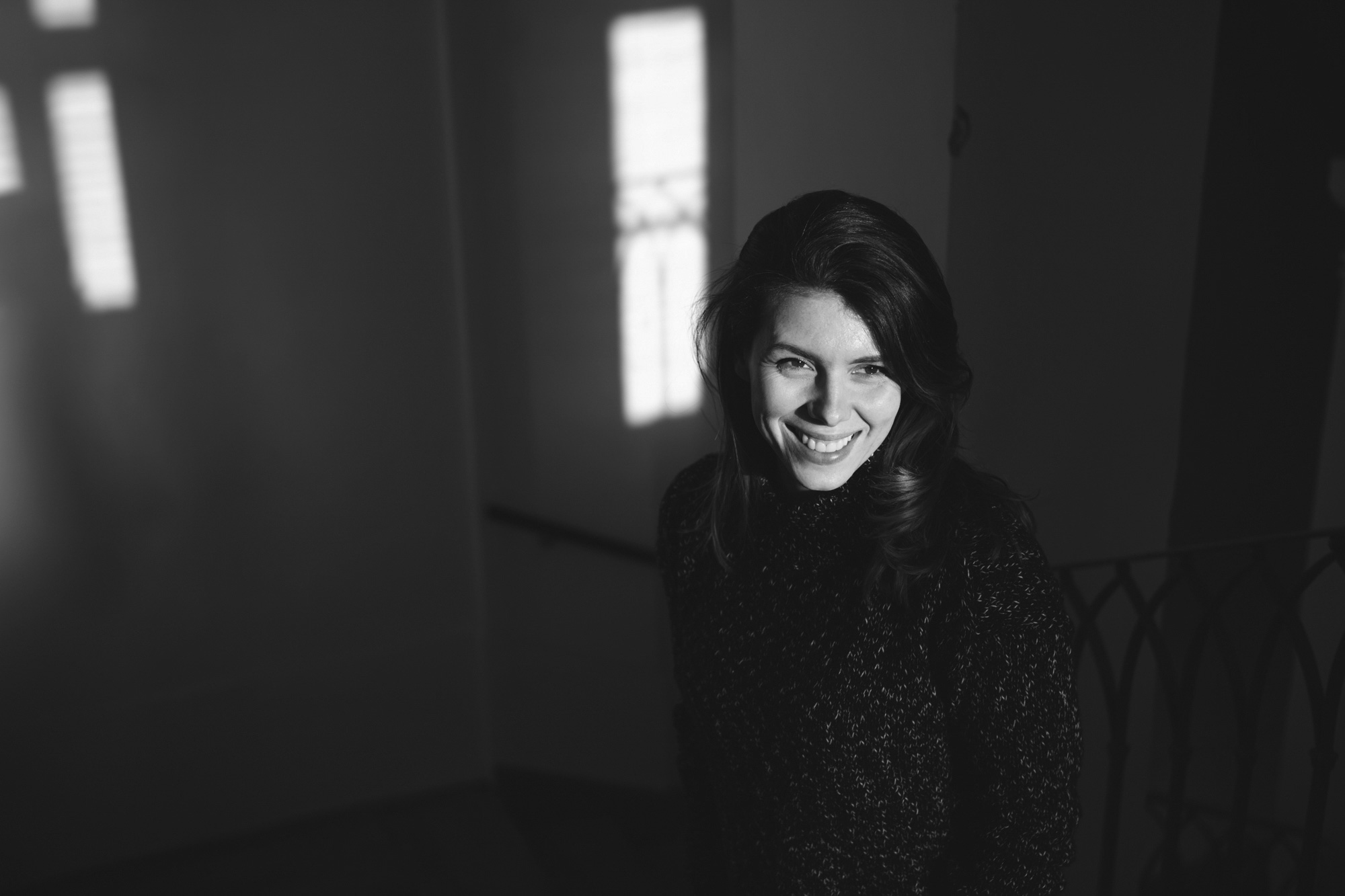

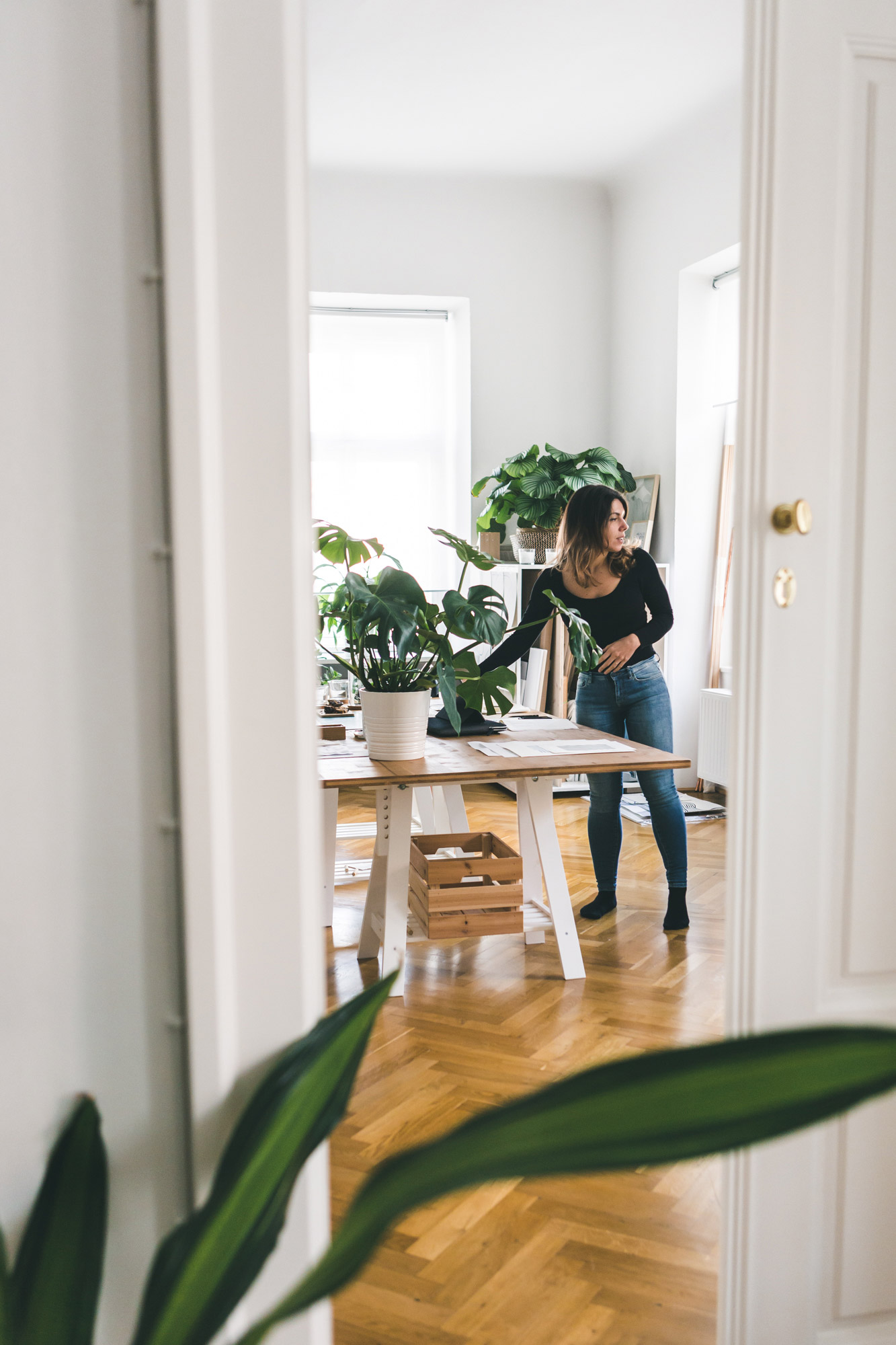
Wanderlust vs. wonderlust: what would you choose? Or do they go hand in hand?
For me the two of them go hand in hand. In order to wonder, you have to wander. In order to create, you have to put yourself in uncomfortable situations, leave your comfort zone.
Although your work is dominated by a combination of black & white, you recently let colours enter your artistic work. How come? What does it make you feel?
Colours and me have a special relationship. They don’t make me feel anything. I like them, but I don’t understand them, I just don’t get the connection between a rusty red and a fierce feminine force. For me they are only light, just different waves of it. Like many other waves that are around – gamma, micro waves, x-rays. Colours are just a way we humans perceive the world. Blue is a short wave, red is a long one.

Your work feels very experimental & playful. Are you happy with your current state of creation?
You are never happy with the current state as an artist. But when I compare it to where I started four years ago, I see that I’ve come a very long way. Still, I’m in a process, I can see how I evolved as an artist and that I’m able to connect ideas. That sounds stupid, but the connection between head and hand is not that easy.
Is your head sometimes switched to autopilot mode?
No, but I don’t feel bad about it. After a long day, my brain sometimes doesn’t want to stop. Then I lie in bed, ready to fall asleep, but there is no pause. And I’ve known my brain long enough now – when it needs to think, I just give it the space to do so. Because my brain and I are like friends, and that’s what friends do.
Is there a city you would like to inject a little »Of Atoms and Lines« into? Why?
If I have to pick just one, it would be San Francisco – the current art scene there is so fresh and non-restricted. There’s a lot of variety and different artists around, who experiment with geometry and mathematics.
No, but I don’t feel bad about it. After a long day, my brain sometimes doesn’t want to stop. Then I lie in bed, ready to fall asleep, but there is no pause. And I’ve known my brain long enough now – when it needs to think, I just give it the space to do so. Because my brain and I are like friends, and that’s what friends do.
Is there a city you would like to inject a little »Of Atoms and Lines« into? Why?
If I have to pick just one, it would be San Francisco – the current art scene there is so fresh and non-restricted. There’s a lot of variety and different artists around, who experiment with geometry and mathematics.
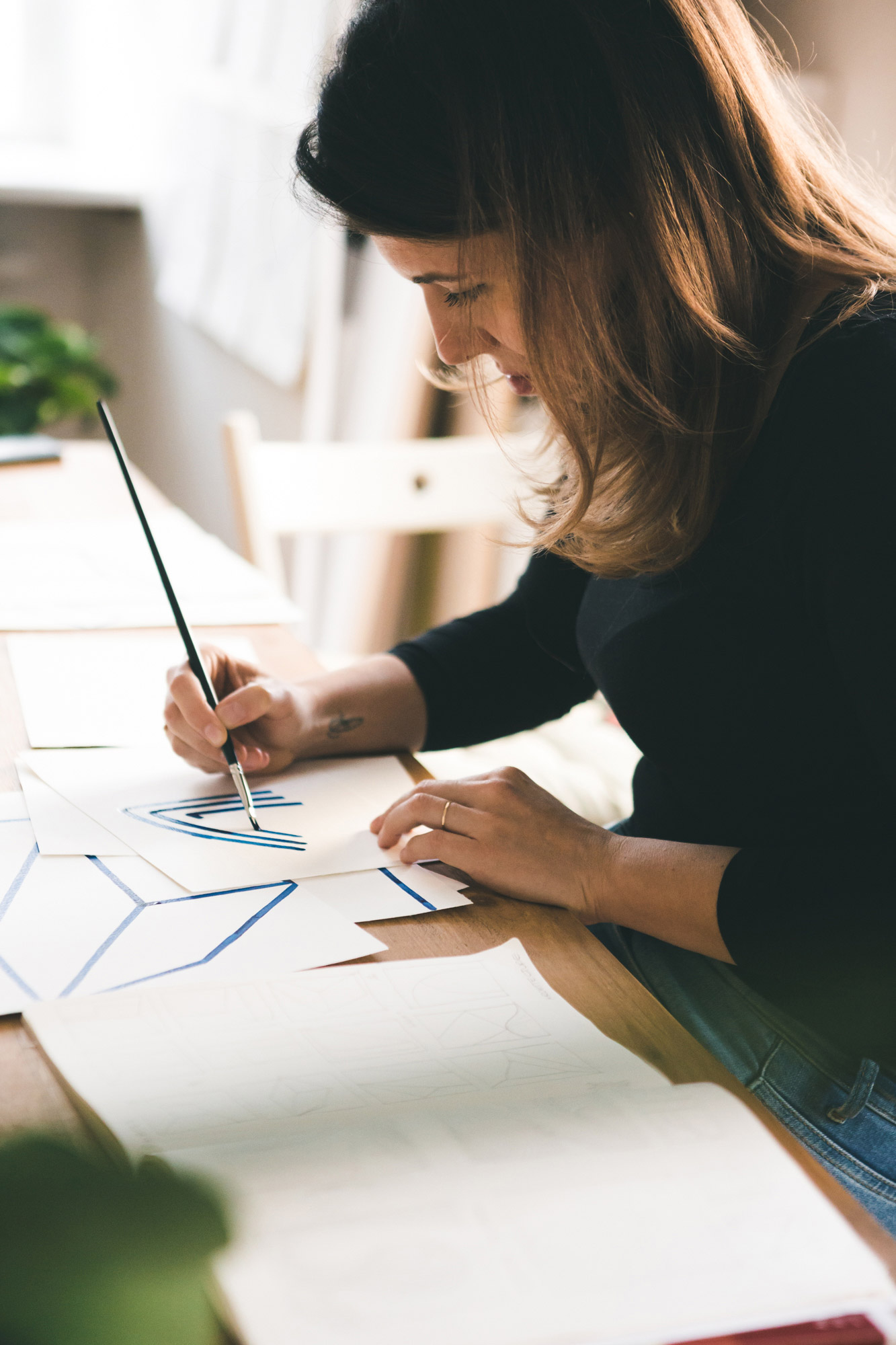

Explain to us your point of view. How does your way of seeing & conceiving the world to others work?
I like to understand how the world works. I wouldn’t say I’m a smart person, otherwise I would have studied physics like the really smart people. (laughs) For me everything in the world is mass within space, even in a solid glass there’s space between the particles. Things just move in a subtle, small way. You can’t see that in the air for instance, but you see it in the sea.
I read many books on that topic and try to interpret what I can understand. This changes my way of looking at things. There’s visual movement in everything. The funny thing is that I hated physics in school, but a few years ago I started to read as much as possible about that topic. And now it follows me around in a way. Even when I’m doing sports, when using a roller ball, I can »see« the air moving around it. I’m in a constant state of wonderment.
JELENA’S READING RECOMMENDATIONS:
»Astrophysics for people in a hurry« by Neil DeGrasse Tyson
»Design as Art« by Bruno Munari
»Ways of Seeing« by John Berger
I like to understand how the world works. I wouldn’t say I’m a smart person, otherwise I would have studied physics like the really smart people. (laughs) For me everything in the world is mass within space, even in a solid glass there’s space between the particles. Things just move in a subtle, small way. You can’t see that in the air for instance, but you see it in the sea.
I read many books on that topic and try to interpret what I can understand. This changes my way of looking at things. There’s visual movement in everything. The funny thing is that I hated physics in school, but a few years ago I started to read as much as possible about that topic. And now it follows me around in a way. Even when I’m doing sports, when using a roller ball, I can »see« the air moving around it. I’m in a constant state of wonderment.
JELENA’S READING RECOMMENDATIONS:
»Astrophysics for people in a hurry« by Neil DeGrasse Tyson
»Design as Art« by Bruno Munari
»Ways of Seeing« by John Berger
»Things just move in a subtle, small way. [...] There’s visual movement in everything.«


Were there certain events and / or people in your professional life that thoroughly changed you?
My dad was the first person who empowered me. He is a creative person with a very uncreative job. But when I was three years old, he used to draw things on paper for me and I kept it in a little folder. Many years later there was my chemistry teacher who convinced me to not study Biology, Chemistry or Medicine, because she saw that I had a more artistic approach to the topic. She encouraged me to do something creative, so I went for architecture. Other than that I learned a lot from London.
How do you find balance between the online & offline world?
I don’t think that I do it really well. I often end up looking at people’s accounts. What I try is to restrict my Instagram usage to one hour a day, and I try to keep a rhythm of posting. I want to show some work every other day. This motivates me to create and it is nice to get some feedback.
Where do you see the future of »Of Atoms And Lines«?
I really would love to do more collaborations. Maybe animations, maybe installations? The spacial experience is one of my main interests. I would love to work on bigger scales.
I don’t think that I do it really well. I often end up looking at people’s accounts. What I try is to restrict my Instagram usage to one hour a day, and I try to keep a rhythm of posting. I want to show some work every other day. This motivates me to create and it is nice to get some feedback.
Where do you see the future of »Of Atoms And Lines«?
I really would love to do more collaborations. Maybe animations, maybe installations? The spacial experience is one of my main interests. I would love to work on bigger scales.


